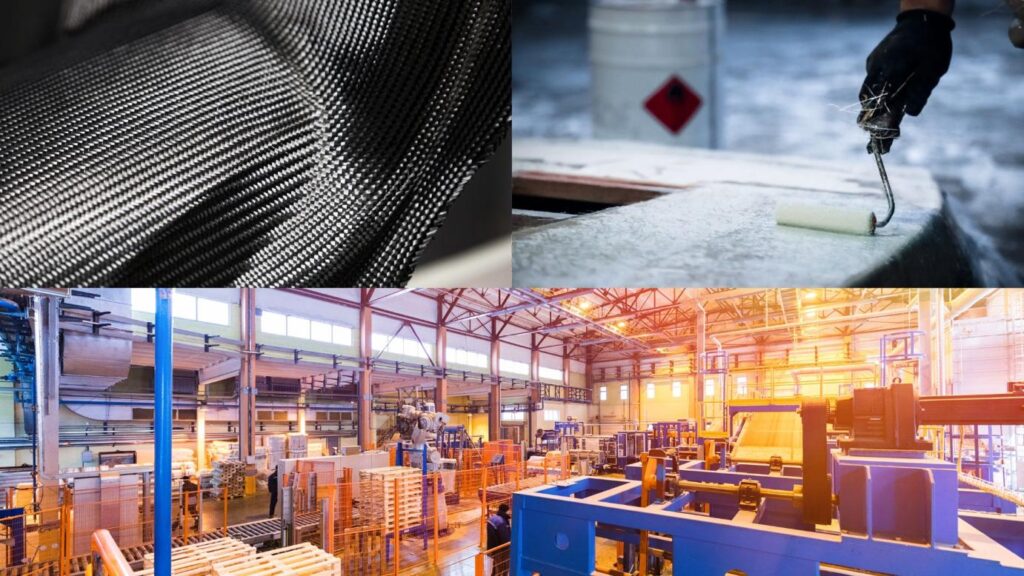
Revolutionising the Aerospace Industry with Composite Materials
The aerospace industry has always been at the forefront of technological advancements, constantly pushing the boundaries of what’s possible. One such innovation that has revolutionized the industry is the use of composite materials. These materials, composed of two or more constituent elements with different properties, offer remarkable strength, lightweight characteristics, and enhanced performance. In this article, we will explore the various production methods and products derived from composite materials that have found their way into the aerospace industry, with a special mention of Innovellix, a leading company experienced in composite technology and product development and testing for aerospace applications.
- The Advantages of Composite Materials:
Composite materials have garnered significant attention in the aerospace industry due to their numerous advantages. Let’s take a closer look at some of these benefits:
a. Strength and Lightweight Construction: Composite materials exhibit exceptional strength-to-weight ratios, making them ideal for aerospace applications. Compared to traditional materials like aluminum or steel, composites offer a significant reduction in weight, leading to enhanced fuel efficiency and increased payload capacity.
b. Structural Integrity: Composites are renowned for their excellent fatigue resistance and durability. They can withstand harsh environmental conditions, including extreme temperatures, humidity, and pressure differentials, ensuring long-term structural integrity and reliability.
c. Design Flexibility: Composite materials offer designers greater flexibility in shaping and molding complex components. This flexibility allows for the creation of aerodynamic structures, reducing drag and improving overall performance.
- Production Methods for Composite Materials:
a. Hand Lay-up: Hand lay-up is one of the most traditional and widely used methods for producing composite parts. In this process, individual layers of fiber reinforcement (such as carbon fiber or fiberglass) are manually applied to a mold or tool. Resin is then introduced to impregnate the fibers, forming the desired shape.
b. Resin Transfer Molding (RTM): RTM is a popular technique for producing large, complex composite components. It involves injecting liquid resin into a closed mold containing a preform of dry fibers. The resin fills the mold, impregnating the fibers and curing to create a solid composite part.
c. Automated Fiber Placement (AFP): AFP is an automated process that utilizes robotic systems to precisely lay down continuous fiber tapes onto a mold or tool. This method ensures consistent fiber alignment and optimized material placement, resulting in high-performance composite structures.
d. Filament Winding: Filament winding involves the precise winding of continuous fibers, typically in the form of rovings or tows, around a rotating mandrel. This method is commonly used to produce cylindrical or tubular composite structures, such as rocket motor casings or pressure vessels.
- Composite Products in the Aerospace Industry:
Composite materials have found widespread application in various aerospace components. Here are some notable examples:
a. Fuselage and Wings: Composite materials are extensively used in the manufacturing of fuselages and wings. The combination of strength and lightweight properties contributes to fuel efficiency, increased range, and improved aerodynamics.
b. Engine Components: Critical engine components, such as fan blades, spinner cones, and nacelles, often utilize composite materials. These components benefit from the high strength-to-weight ratio and resistance to heat and corrosion offered by composites.
c. Interior Components: Composites play a vital role in the interior design of aircraft, providing lightweight, fire-resistant, and aesthetically pleasing solutions. Applications include overhead storage bins, cabin panels, and lavatory structures.
d. Landing Gear: Composite materials are used in the construction of landing gear components, such as doors, fairings, and shock strut fairings. Their high strength and impact resistance ensure reliable and efficient landing gear operations.
- Innovellix: Leading the Way in Composite Technology:
When it comes to composite technology and product development for the aerospace industry, Innovellix stands out as a leading company. With their extensive expertise and experience, Innovellix has consistently delivered innovative solutions tailored to meet the unique requirements of aerospace applications. They specialize in composite manufacturing processes, structural analysis, testing, and certification, ensuring the highest quality standards and adherence to industry regulations.
Composite materials have revolutionized the aerospace industry, providing unparalleled strength, lightweight construction, and design flexibility. With production methods like hand lay-up, RTM, AFP, and filament winding, the aerospace sector has witnessed remarkable advancements in component manufacturing. From fuselages and wings to engine components and interior structures, composites have proven their worth in a multitude of aerospace applications. As the industry continues to evolve, Innovellix remains at the forefront, driving innovation in composite technology and product development for the aerospace sector.








